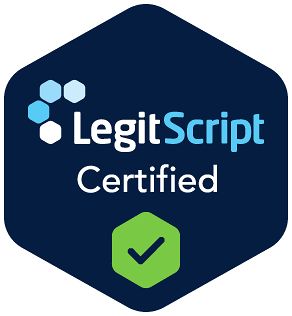Oxycodone: Understanding Misuse, Withdrawal, and the Path to Recovery
Oxycodone is a powerful prescription opioid used to treat moderate to severe pain. While it can be effective under medical supervision, oxycodone carries a high risk for misuse, dependence, and addiction. Prolonged or nonmedical use can lead to physical tolerance, withdrawal symptoms, and life-threatening overdose.
At Lifeline Recovery and Wellness in Malvern, PA, we provide outpatient support for individuals recovering from oxycodone misuse. Our clinical team offers structured programs including Partial Hospitalization (PHP), Intensive Outpatient (IOP), and Outpatient (OP) to help clients regain control after detox and stabilization.
What Is Oxycodone?
Oxycodone is a semi-synthetic opioid prescribed under brand names like OxyContin, Percocet (with acetaminophen), and Roxicodone. It works by binding to opioid receptors in the brain and spinal cord to reduce the perception of pain. However, it also produces euphoria and sedation, which can lead to compulsive use.
According to the CDC, over 70,000 opioid-related overdose deaths occurred in the United States in 2021, many involving prescription opioids like oxycodone. Risk increases with high doses, long-term use, or when combined with other depressants like alcohol or benzodiazepines.
Street Names for Oxycodone
Common slang and street names include:
- Oxy
- Percs
- Blues
- Roxies, or Rockies
- Thirties
What Does It Look Like When Someone Is Using Oxycodone?
Signs of oxycodone misuse can include both physical and behavioral changes:
- Pinpoint pupils
- Drowsiness or “nodding off”
- Constipation and nausea
- Slurred speech
- Mood swings or agitation
- Doctor shopping or forged prescriptions
- Financial difficulties or missing medication
- Withdrawal from responsibilities or social activities
Over time, users may develop a high tolerance and require increasing doses to feel the same effect.
What Does Oxycodone and Its Paraphernalia Look Like?
Oxycodone comes in tablet or capsule form, often small and round or oval, and may be crushed and snorted or injected when misused. Paraphernalia may include:
- Pill crushers
- Burned spoons, bottle caps, or tin foil with streaks
- Syringes
- Rolled bills or straws
- Pill bottles with missing labels
- Empty blister packs or unusual residue on surfaces
How Do People Use Oxycodone?
When misused, oxycodone may be taken in higher-than-prescribed doses or altered for faster absorption:
- Oral ingestion in large doses
- Snorting crushed tablets
- Smoking the powder
- Injecting dissolved pills
All routes increase the risk of overdose, infection, and long-term dependence.
What Is the Best Way to Quit Oxycodone?
Oxycodone withdrawal can be physically and emotionally difficult without support. The most effective recovery path typically includes:
- Medically supervised detox to manage withdrawal symptoms
- Medication-assisted treatment (MAT) using buprenorphine or naltrexone
- Evidence-based therapy, including CBT and trauma-focused care
- Ongoing outpatient treatment to address co-occurring disorders and relapse triggers
To locate detox providers, use the SAMHSA Treatment Locator. You can also reach out to our team at Lifeline Recovery and Wellness. We will help you find reliable detox resources and coordinate a smooth transition into our care.
What Does Detox from Oxycodone Look Like?
Withdrawal symptoms usually begin 8 to 12 hours after the last dose and may last up to 10 days, depending on dosage and duration of use.
Typical Withdrawal Timeline:
- 8 to 24 hours: Anxiety, restlessness, sweating, yawning, and muscle aches
- 24 to 72 hours: Nausea, vomiting, diarrhea, abdominal cramping, and chills
- 3 to 7 days: Symptoms gradually improve, though fatigue and mood changes may persist
- 1 to 2 weeks: Sleep disturbances and psychological cravings often linger
- Beyond 2 weeks: Some individuals experience post-acute withdrawal symptoms such as irritability, depression, and drug cravings
While opioid withdrawal is typically not life-threatening, complications like dehydration or co-occurring conditions may require medical care.
How Lifeline Recovery and Wellness Can Help
At Lifeline Recovery and Wellness, we work with individuals who have already completed detox and are ready to continue treatment in a safe, structured environment. Our outpatient recovery programs offer:
- Partial Hospitalization Program (PHP)
- Intensive Outpatient Program (IOP)
- Outpatient Program (OP)
- Individual and group therapy
- Medication management
- Dual diagnosis treatment
- Relapse prevention planning
- Life skills development and family support
If you or a loved one is recovering from oxycodone misuse, we are here to help. Contact Lifeline Recovery and Wellness in Malvern, PA to begin your path to healing.

 Start Your Journey
Start Your Journey

